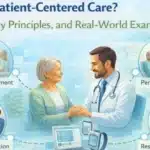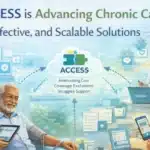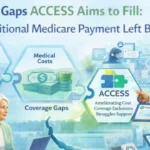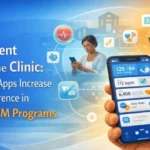Remote Care Technology: A Solution to Physician Burnout

Burnout among physicians, nurses, and other critical healthcare personnel has long been a source of concern in the healthcare industry, and it has only worsened since the outbreak of Covid-19.
Not only this, burnout also contributes to higher attrition, with affected doctors more likely to quit their jobs or retire early — a situation that most healthcare organizations can hardly afford at a time when skilled clinical workers are at a shortage. With RPM-powered remote care systems, operators can fight back and reduce physician burnout.
Table of Contents
ToggleWhat Are Some Ways Remote Care Can Help Reduce Physician Burnout?
Understanding the causes of medical burnout is the first step toward reducing it. Inadequate assistance, increasing workloads and administrative tasks are piling up the burden on physicians. Burnout happens when doctors feel they can’t make the best use of their time, lack the autonomy to provide the best care to their patients, or feel that they are being rushed in service of profitability.
This data demonstrates that burnout is caused by both emotional frustration and physical tiredness. Remote care technology, including Remote Patient Monitoring (RPM) and Chronic Care Management (CCM), with its emphasis on efficiency, ease of use, and improved clinical skills, can help achieve a sense of fulfillment in physicians.
- Reducing Frustration With Administrative Tasks: Telehealth technology, when completely integrated into an organization’s EHR system, speeds up and simplifies daily chores, such as taking notes, getting lab results, and checking in with the patients.
Since the RPM devices transfer patient data safely and seamlessly to the care provider’s EHR system on a continuous basis, there is less human intervention required. This not only decreases the workload for healthcare providers, but also reduces the risk of error and stress that comes with it.
Remote patient monitoring systems allow automated analysis of patient trends, which reduces the amount of manual analysis required by doctors. Automated alerts enable early detection of a patient’s condition, allowing registered nurses or caregivers to handle certain situations without the involvement of a physician.
- Improving Communication, Collaboration, and Teamwork: Remote care can be an effective technique for minimizing physician fatigue since it eliminates inefficiencies while also actively improving several essential clinical routines and capabilities. The end result is a higher, more satisfactory level of patient care, which promotes improved patient outcomes and job satisfaction among clinical staff.
For example, improved communication and information sharing enables care teams to cooperate more readily and effectively. In addition to encouraging teamwork in an industry where departments are often segregated, this can help primary care doctors reduce stress and feelings of isolation by providing them with a broader foundation of decision support to depend on.
This spares physicians and care teams in rural locations the stress and effort of transporting critically injured patients to a larger facility because they don’t have the skills or resources to treat on-site.
- Creating A Flexible & Satisfying Work-life Balance: The simplicity of remote treatment can also help physicians achieve a much more satisfying work-life balance.
Remote care allows for more flexible scheduling of patient consultations, reduces the irritation and time wasted due to missed visits. And, at a time when many physicians are dissatisfied with value-based care and other perceived hurdles to their ability to provide care, the direct connection between patient and provider offered by remote care is highly appealing.
The obvious benefit of remote care technology is minimizing the need for commuting, which is a significant advantage for facilities actively recruiting people. It also helps to keep doctors and patients connected during extreme weather conditions or other unforeseen circumstances, which not only improves treatment quality but also increases patient and provider satisfaction.
- Accepting The Trend Towards Healthcare Technologies: Prior to 2020, some physicians may have been hesitant to use telehealth platforms. However, Covid-19 changed this by demonstrating the benefits of remote treatment and establishing it as an industry standard. As a result, more healthcare professionals are interested in implementing an RPM program.
The development of smaller, more portable monitoring devices and platforms in recent years has undoubtedly fueled this passion. Previously, clinicians had to go to the technology, such as a nurse’s station or an office computer, but now they may bring the technology with them as they do their rounds.
Burnout among physicians is a growing crisis—and remote care technology offers real relief.
This article explores how telehealth, RPM, and virtual collaboration tools lighten provider workloads by reducing administrative burdens, improving work–life balance, and enhancing care efficiency. Discover how HealthArc’s remote care solutions empower doctors to deliver high-quality treatment while minimizing stress and burnout.
Conclusion
Reducing physician burnout is merely the beginning, and it is not limited to long hours. It is the underlying gap between health providers and their goal to serve the patients that drives them. And, given the benefits, RPM may be the most beneficial monitoring platform in this regard.
HealthArc, a pioneer in digital health solutions and Remote Care Platforms, specializes in assisting healthcare providers using technology to satisfy a wide range of patient care requirements. HealthArc’s all-in-one remote care monitoring software enables clinicians to remotely interact with their patients, improve reimbursements, organize billing, and reduce documentation while improving clinical efficiency.
Our HIPAA-compliant software ensures that you follow the policies and stay organized for accurate documentation and seamless billing aligned with CMS requirements. Healthcare practices can keep track of their staff productivity, billing information, and a variety of other patient and clinical reports, along with seamless integration with all major EHRs via HL7 and FHIR capabilities.
HealthArc provides analytics at a program level, practice level, and delivers clinical insights for informed decision-making. If you want to understand more about how we can help you achieve your specific operational goals and reduce staff burnout at the same time, schedule a free demo now or talk to our support team at (201) 885 5571.
Frequently Asked Questions (FAQs)
RPM automates patient monitoring, lessens manual data entry, enhances care coordination, and minimizes the documentation burden for providers after hours.
Yes, remote care technologies can increase physician satisfaction by allowing for flexible scheduling, reducing unnecessary visits, and enabling remote consultations.
Integrated remote care platforms streamline workflows by interfacing with EHRs, automating reporting, and easing the administrative burden.
Most Recent Blogs
Categories
Related Blog
- December 24, 2025 | Read Time: 7 mins
What Is Patient-Centered Care? Benefits, Key Principles, and Real-World Examples
Patient-centered care is one of the most important ideas shaping how healthcare...
Learn More- December 19, 2025 | Read Time: 12 mins
Engagement Beyond the Clinic: How Mobile Apps Increase Patient Adherence in RPM and RTM Programs
Through the introduction of Remote Patient Monitoring (RPM) and Remote Therapeutic Monitoring...
Learn More- December 15, 2025 | Read Time: 10 mins
G2211 CPT Code: Complete Description, Billing Guidelines & Reimbursement
G2211 CPT code is an add-on HCPCS code that lets you capture...
Learn More


